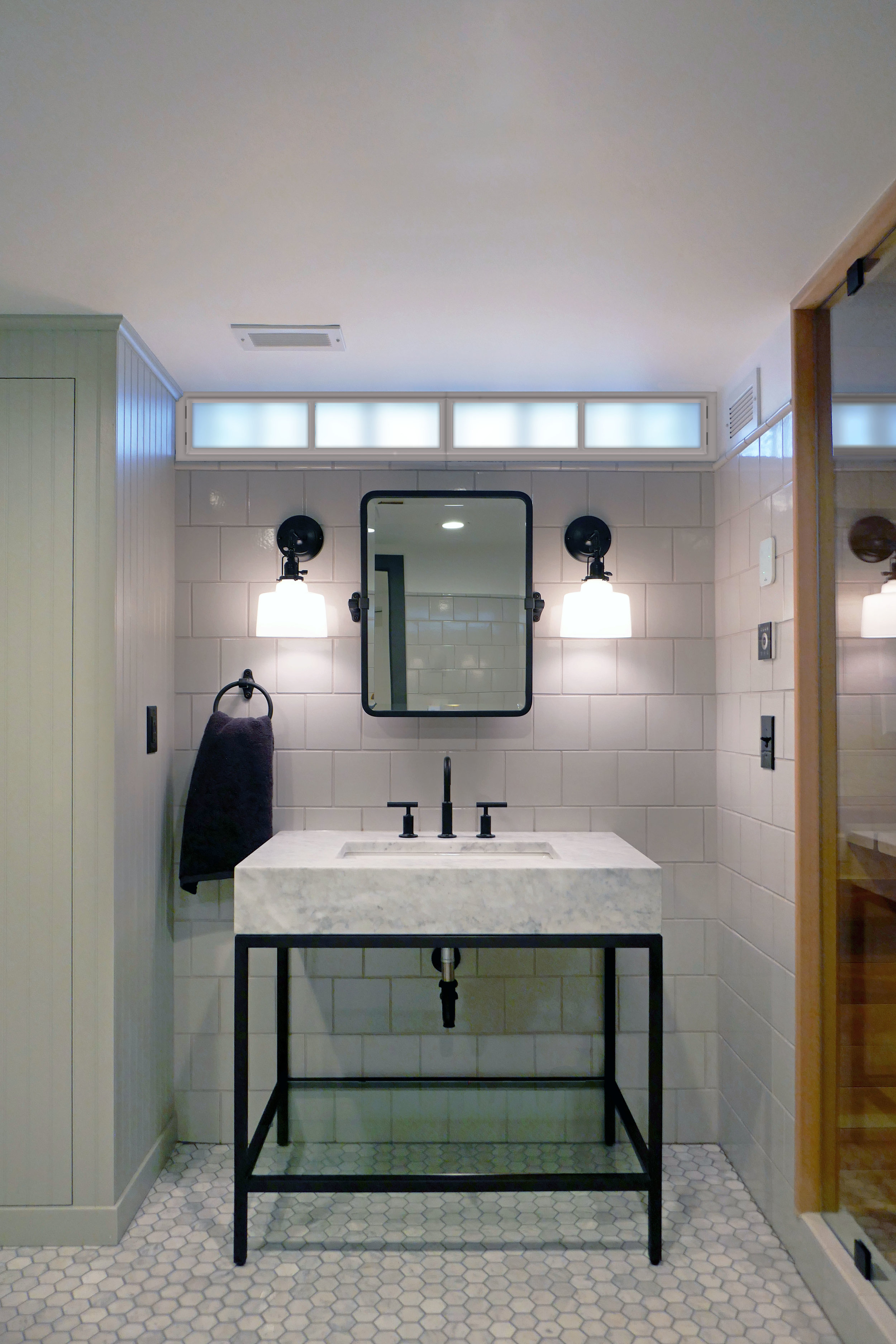Don’t have the budget, time, or skill set to retile your bathroom? Good news, you may not need to! While tile can start to wear or look dated after a handful of years, the tile itself is generally resilient. Here are some things to consider when deciding what action needs to be taken.
What material is the tile?
Porcelain or ceramic
Natural stone – marble, travertine, quartz, granite, etc.
Glass, metal, or high sheen materials
Regrout
Porcelain or ceramic can be easily refreshed with a new grout joint. This is an easy DIY task with a little elbow grease. The existing grout (chipped, cracked, missing, etc.) can be chiseled out and replaced while keeping the field tile intact.
Ceramic and porcelain tiles are not porous, so a sealer is not necessary for the tile. Grout will always need a sealer applied. Be sure to refer to the instructions on your grout packaging.
Reseal
Resealing is an option for natural stone and grout. Natural stone is porous, therefore prone to stains. Sediment can seep into the pores if the tile is improperly sealed or is due for a reseal.
If the tile is already stained, products such as liquid stain removers or a paste-like poultice that can help to extract stains out of installed tile.
To prevent future staining, all-natural stone tile and countertops should be sealed upon installation and then resealed every 5-10 years. Always consult the directions on your bottle of sealer. Sealer is applied by putting it on the tile, letting it soak into the pores, then wiping away any excess. It is important to understand that you cannot ‘over seal’ tile leading to damage, just that over sealing leads to a waste in the sealer. When the pores are saturated with the sealer, no additional sealer will ‘fit’…. And neither will the coffee you spill on the floor.
Recolor
You can replace grout surrounding glass tile, but glass tile is more fragile so the likeliness of chipping the tile is higher. This could be an opportunity to recolor the grout. Grout paints, or similar, are available to rejuvenate the look of your grout. Many times, they also act as a sealer. Recoloring products can be used with porcelain and ceramic tiles as well. Natural stone should be more carefully considered as some colors may stain the tile.








